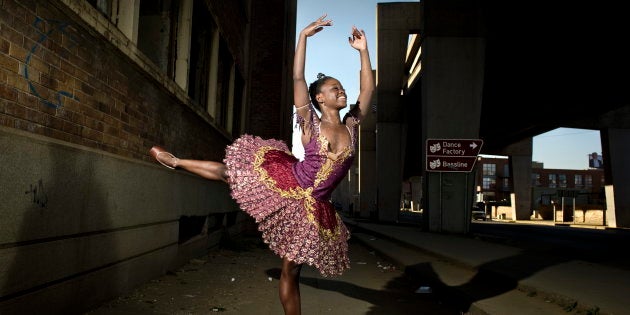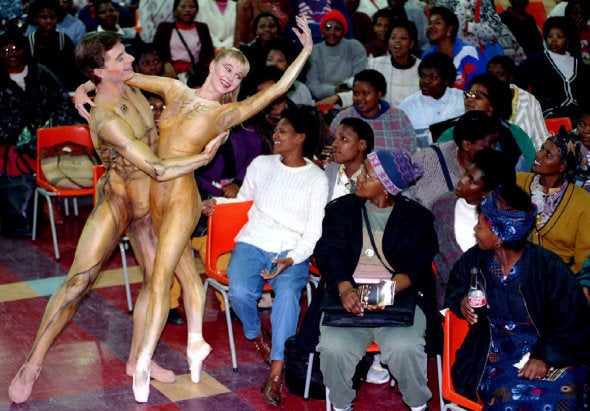
World history is fraught with the tales of how some used their power and privilege to rule over the unwilling, and sometimes, unwitting. Africa was the epicenter of human greed and for centuries, the continent dealt with incursions, cruelty, economic advancement, upliftment, and oppression. There is no single story of colonialism. We remain a messy and complicated continent and the fight to "decolonize" ourselves reflects the complex range of our humanity.
South Africa, with a democracy still very much in its infancy, represents that complexity like no other. We are a country of fragments, and bringing those together as a united, multi-cultural society is a challenge that is still far from concluded.
The topic of "decolonising" is not unique to South Africa, but has been under discussion for some time in academia, as well as other organizations, globally – just in the last year, decolonising appeared on the agendas at conferences in United Arab Emirates, Canada, and Brazil. South African students have been leading the discussion with varying results in reception, largely depending on the methods used. Intimidation and violence are never a good vector for any message – forceful actions tend to have the result of closing the ears of those who should be listening.
Recently, South African ballet came under the spotlight at the University of Cape Town during student protests. As dancers from the UCT School of Dance and the Cape Town City Ballet (CTCB) faced direct intimidation and were forced off campus, reports in professional as well as social media conflated the protests with the apparent contravention of a lease agreement, and the situation became muddled into the decolonising debate.
The facts reflect a different reality: the two parties had already agreed to conclude the lease at the end of 2016 and CTCB was already in the process of moving off campus. As School of Dance Director, Gerard Samuel explains, "The reason behind why there's an exit in the first place is because, as a department, we're growing. We're joining the Drama Department and our undergraduate programs are expanding, so we need the space. We've managed for a very long time to share the space, however, we have particular needs and as a university we need to service those needs first."
In an environment where clear glass windows create more than just a physical barrier between other faculties and the ballet, the dancers became swept up in the protest action.
Very few students can make it into a ballet company, as relatively few are good enough to make it to a World Cup – and yet, one sport is accessible, and the other has a very real problem.
Samuel explains, "This was not about the School of Dance or City Ballet. In South Africa, we are going through a national crisis. At that point and in that week, students were on campus, forcing students and teachers out of their classrooms to join the protest. That tension, anxiety, and disruption happened equally at the School of Dance, just as it happened at the other faculties. We weren't immune – they equally took dancers and teachers out of the space, and it was done in a forceful, intimidating, and threatening way." Samuel explained that earlier in the year, with the awareness that student protests begun in 2015 were going to continue, he had put a plan in place for a fire/protest evacuation drill, in which he sought cooperation from CTCB.
The image of panicked dancers rushing to clear out their lockers became a symbol of the larger discussion about ballet in South Africa, and the argument against ballet as a representation of colonialism started to grow in volume.
The events of November 2016 reflect a much deeper argument: what is the role of ballet in Africa? To a student looking in on those massive windows, seeing dancers pirouette en pointe, it might be understandable to see it as a "non-African" dance and identify it as a foreign or colonial expression. If one only looks at the history of the art form, they would be correct. The origins of ballet lie in the courts of the aristocracy of the mid-15 century – but that is not much different from South Africa's most popular sport of soccer.

The modern game as we know it largely developed through the exclusive, elite public schools of England. Yet over the years, soccer developed as a far more egalitarian game to the extent that it has become one of our national pastimes. Ballet, on the other hand, despite efforts in many parts of the world to evolve, is still perceived as being exclusionary or elitist - a perception frequently encouraged by those who are dedicated to maintaining the mystique. Very few students can make it into a ballet company, as relatively few are good enough to make it to a World Cup – and yet, one sport is accessible, and the other has a very real problem.
This is borne out in several recent essays written by former students of the School of Dance and City Ballet, who tell of a more disdainful attitude towards dancers of other disciplines. Efforts made over the decades to include more styles, from hip-hop to pantsula, at the School of Dance have not made their way into the CTCB's studios, and the ballet company appears to have deliberately avoided being part of the country's present.
Globally, ballet is still seen as a majority "white" activity, so when a ballet dancer like America's Misty Copeland takes the principal dancer position in a company, it makes headlines simply because she is black.
Closer to home, organizations like Capetonian Philip Boyd's 'Dance For All' continues to prove this perception flawed. After 25 years of teaching ballet in Cape Town's townships and rural areas, breaking the barrier of colour-coded activities has proven very successful, with numerous graduates going on to professional careers around the world.
In SA, we decided that some people have culture, and some have traditions. We talk about how Zulu dance is a 'tradition', but we don't talk about traditional ballet – and that adds to the exclusionary nature of the form.
City Ballet's company of dancers reflects a diversity that looks a lot like South Africa. However - and City Ballet is not alone in this - when one looks at the productions, we still see old, Euro-centric ballets, with minimal effort to create stories which reflect the country. South African companies are still telling the stories of "white" culture – Sleeping Beauty, Peter Pan, Romeo and Juliet. No doubt they appeal to the faithful audience who want to feel they're partaking in a privileged 'cultural' event, but they seem very out of touch to the vast majority of people who feel a little more "assimilation" into South Africa's unique story is overdue.
Gerard Samuel raises the question which we should all be considering, The word 'ballet' in French means 'dance'. In South Africa, the word 'ballet' has come to mean something completely different. Ballet has been positioned as the mainstream concert theatre form of dance because of colonialism and apartheid. It has come to obliterate all other dance forms. It has squashed everything around it in that process and is still reeling from an 18 century history.
We're dealing with the fact that at the time ballet came here, people were being killed in their thousands, they were chased into the deserts - and now we are dealing with a fragmented society of eleven unique voices. How do you work with what is present today and present it as art? Some people have 'high art' and some have 'culture'. Why do we have a Department of Arts and Culture? Why do we not simply have a Department of Culture? In SA, we decided that some people have culture, and some have traditions. We talk about how Zulu dance is a 'tradition', but we don't talk about traditional ballet – and that adds to the exclusionary nature of the form.
One rarely chooses to be a symbol for revolution. Most revolutionaries are individuals forced into a leadership position, and are then expected to pave the way forward. Ballet in South Africa is at an important nexus in cultural and social terms in a place where it could be at the forefront of the "decolonising" revolution.
To miss this chance at reforming and opening up our dance companies, having the courage to present our unique, human, and yet universal stories, would be a tragedy. Is the current form of representation in the power players of ballet management, faced as they are with a dire lack of funding, able to lead the way?
It will take imagination, support, and new thinking (and perhaps new blood), but should those in the positions of power and authority choose to answer the call, the changes across the country could be transformative.
